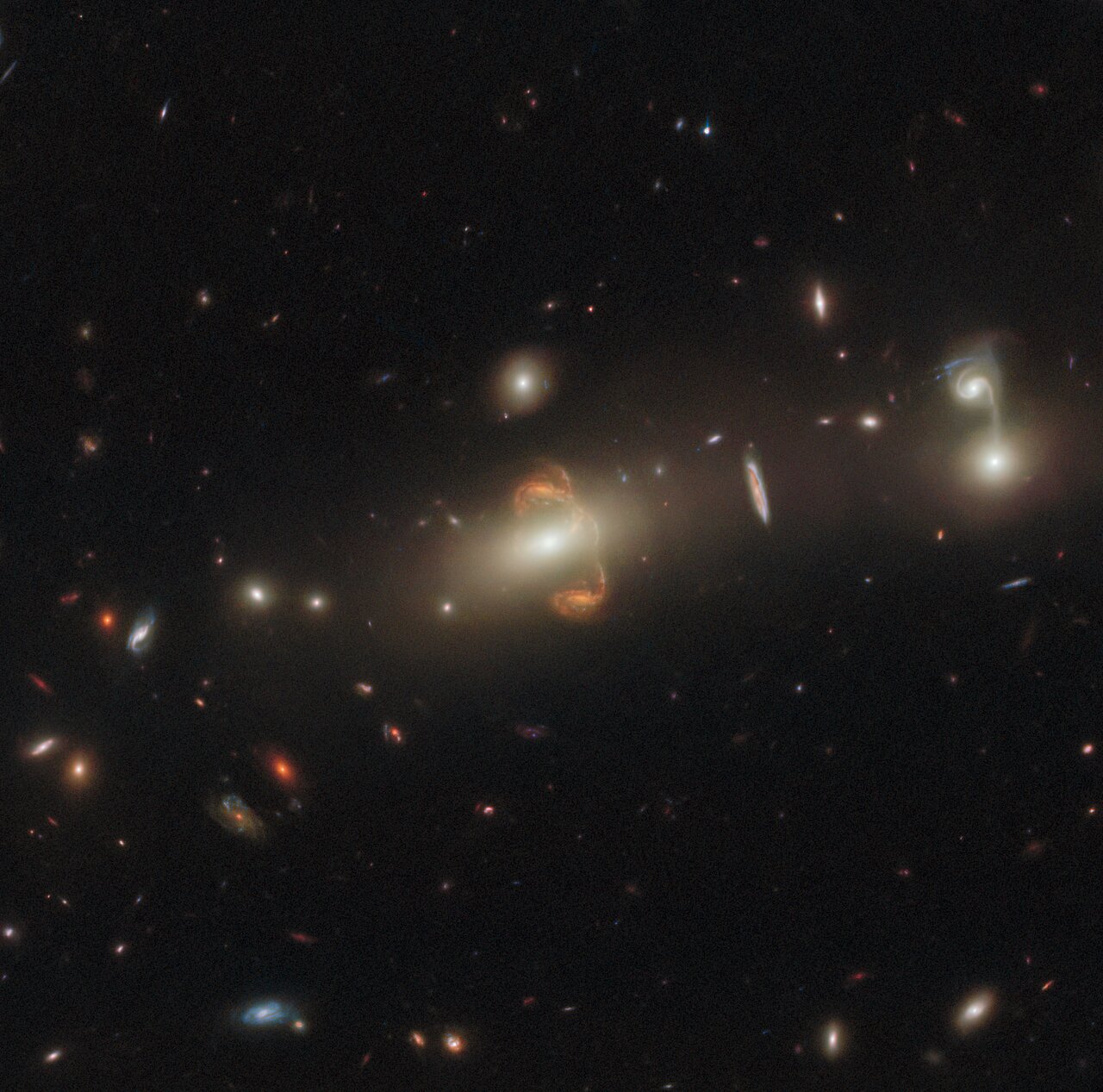Cosmos SGAS J143845+145407
This intriguing observation from the NASA/ESA Hubble Space Telescope shows a gravitationally lensed galaxy with the long-winded identification SGAS J143845+145407. Gravitational lensing has resulted in a mirror image of the galaxy at the centre of this image, creating a captivating centrepiece. Gravitational lensing occurs when a massive celestial body — such as a galaxy cluster — causes a sufficient curvature of spacetime for the path of light around it to be visibly bent, as if by a lens. Appropriately, the body causing the light to curve is called a gravitational lens, and the distorted background object is referred to as being “lensed”. Gravitational lensing can result in multiple images of the original galaxy, as seen in this image, or in the background object appearing as a distorted arc or even a ring. Another important consequence of this lensing distortion is magnification, allowing astronomers to observe objects that would otherwise be too far away or too faint to be seen. Hubble has a special flair for detecting lensed galaxies. The telescope’s sensitivity and crystal-clear vision allow it to see faint and distant gravitational lenses that cannot be detected with ground-based telescopes because of the blurring effect of Earth’s atmosphere. Hubble was the first telescope to resolve details within lensed images of galaxies, and is capable of imaging both their shape and internal structure. This particular lensed galaxy is from a set of Hubble observations that take advantage of gravitational lensing to peer inside galaxies in the early Universe. The lensing reveals details of distant galaxies that would otherwise be unobtainable, and this allows astronomers to determine star formation in early galaxies. This in turn gives scientists a better insight into how the overall evolution of galaxies has unfolded.
